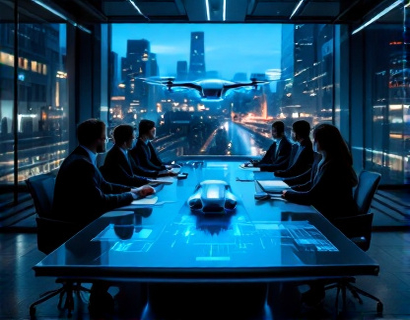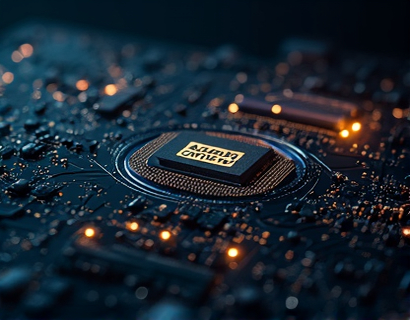Cutting-Edge Aerospace Innovations: Transforming Efficiency and Safety for Industry Leaders
The aerospace industry stands at the forefront of technological innovation, driven by the relentless pursuit of efficiency, safety, and performance. Recent advancements have not only enhanced the capabilities of current aircraft and spacecraft but have also paved the way for new frontiers in aviation and space exploration. This article delves into the latest technological breakthroughs that are reshaping the industry, offering industry professionals and visionaries a comprehensive look at the future of aerospace engineering.
One of the most significant areas of innovation is in materials science. The development of advanced composites and lightweight alloys has revolutionized aircraft design. These materials offer superior strength-to-weight ratios, reducing the overall weight of the aircraft and thereby improving fuel efficiency. For instance, the use of carbon fiber reinforced polymers (CFRP) has become widespread in both commercial and military aircraft. CFRP not only reduces weight but also enhances structural integrity, allowing for longer service life and reduced maintenance costs. Additionally, researchers are exploring the use of nanomaterials and smart materials that can adapt to changing conditions, further enhancing the performance and durability of aerospace structures.
Another critical area is in propulsion technology. The quest for more efficient and environmentally friendly engines continues to drive innovation. Electric and hybrid-electric propulsion systems are gaining traction, particularly for smaller aircraft and drones. These systems offer significant reductions in fuel consumption and emissions, aligning with global efforts to reduce the carbon footprint of aviation. For larger commercial aircraft, researchers are developing advanced turbofans with higher bypass ratios, which improve fuel efficiency and reduce noise pollution. Moreover, the integration of advanced materials in engine components, such as ceramic matrix composites, allows for higher operating temperatures and improved performance.
Avionics and flight control systems have also seen remarkable advancements. The transition from traditional mechanical and hydraulic systems to digital and fly-by-wire technologies has greatly enhanced the safety and reliability of modern aircraft. Advanced avionics systems now incorporate sophisticated sensors, real-time data processing, and artificial intelligence (AI) algorithms to provide pilots with precise and timely information. These systems can automatically adjust flight paths to optimize fuel consumption and avoid turbulence, further improving efficiency. Additionally, the integration of unmanned aerial vehicle (UAV) technology into commercial operations is expanding the capabilities of the aerospace industry, enabling applications in surveillance, delivery, and environmental monitoring.
Safety is a paramount concern in aerospace, and recent innovations have significantly bolstered the safety of both manned and unmanned flights. Advanced collision avoidance systems use a combination of radar, lidar, and AI to detect and prevent potential collisions in real-time. These systems can autonomously adjust flight paths to avoid obstacles, even in complex and dynamic environments. Furthermore, the development of more robust and redundant systems ensures that critical functions remain operational even in the event of component failures. For example, modern aircraft are equipped with multiple redundant systems for essential functions such as flight control, navigation, and communication, minimizing the risk of catastrophic failures.
In the realm of space exploration, innovations are pushing the boundaries of what is possible. Reusable rocket technology, pioneered by companies like SpaceX, has dramatically reduced the cost of access to space. By designing rockets that can land and be reused, the industry is moving towards a model where space travel becomes more frequent and economically viable. This shift is not only opening up new opportunities for satellite deployment and space tourism but also paving the way for deeper space missions, including potential manned missions to Mars. Advanced propulsion systems, such as ion drives and nuclear thermal propulsion, are being developed to enable faster and more efficient travel across vast distances.
Another area of significant innovation is in the field of aerodynamics. Computational fluid dynamics (CFD) and wind tunnel testing have been enhanced by AI and machine learning algorithms, allowing for more accurate and efficient design optimization. These tools can simulate complex aerodynamic phenomena and predict performance with high precision, reducing the need for extensive physical testing. This not only speeds up the design process but also leads to more optimized and efficient aircraft and spacecraft designs. Additionally, the use of adaptive structures that can change shape in response to flight conditions is being explored, further enhancing aerodynamic performance.
Sustainability is a growing focus within the aerospace industry, with a strong emphasis on reducing environmental impact. Innovations in sustainable aviation fuels (SAFs) are making significant strides, with several airlines already incorporating SAFs into their operations. These fuels are derived from renewable resources and can reduce greenhouse gas emissions by up to 80% over the fuel's lifecycle. Additionally, electric and hybrid propulsion systems for smaller aircraft are becoming more viable, offering a promising path towards zero-emission flight. Ground operations are also seeing improvements, with electric ground support equipment and more efficient logistics reducing the overall carbon footprint of airports and airfields.
The integration of Internet of Things (IoT) technology is transforming the way aerospace operations are managed. IoT sensors embedded in aircraft and spacecraft can continuously monitor various parameters, from engine health to structural integrity, providing real-time data for predictive maintenance. This proactive approach to maintenance not only enhances safety but also reduces downtime and maintenance costs. Data analytics and AI are used to process this vast amount of information, identifying patterns and predicting potential issues before they become critical. This not only improves operational efficiency but also extends the lifespan of aerospace assets.
Human factors and ergonomics are also receiving increased attention in aerospace design. Advanced simulation and virtual reality (VR) technologies are being used to create more intuitive and user-friendly interfaces for pilots and crew. These tools allow for comprehensive training and familiarization with complex systems, reducing the learning curve and improving operational readiness. Additionally, the design of aircraft cabins and spacecraft living quarters is being optimized for comfort and well-being, taking into account factors such as lighting, noise levels, and personal space. This holistic approach to design enhances the overall experience for both crew and passengers.
Looking ahead, the future of aerospace engineering holds even more exciting possibilities. The development of hypersonic vehicles, capable of traveling at speeds exceeding Mach 5, is on the horizon. These vehicles will revolutionize long-distance travel, reducing flight times significantly. However, achieving stable and controlled hypersonic flight presents significant technical challenges, including managing extreme heat and aerodynamic forces. Research in advanced materials and cooling systems is crucial to overcoming these hurdles.
Another frontier is the exploration of space habitats and lunar or Mars bases. Innovations in life support systems, radiation shielding, and in-situ resource utilization (ISRU) are essential for sustaining human presence in space. ISRU technologies, for example, aim to extract and utilize resources found on other celestial bodies, such as water from lunar regolith, to support life and propulsion. These advancements are not only vital for scientific research but also for the potential establishment of permanent human settlements beyond Earth.
In conclusion, the aerospace industry is at a pivotal moment, driven by a wave of innovative technologies that are transforming efficiency and safety. From advanced materials and propulsion systems to AI and IoT, these innovations are not only enhancing the performance of existing aircraft and spacecraft but also opening up new possibilities for the future. As the industry continues to push the boundaries of what is possible, industry leaders must stay ahead of the curve, embracing these advancements to remain competitive and drive progress. The future of aerospace engineering is bright, promising a new era of exploration, efficiency, and safety.










































